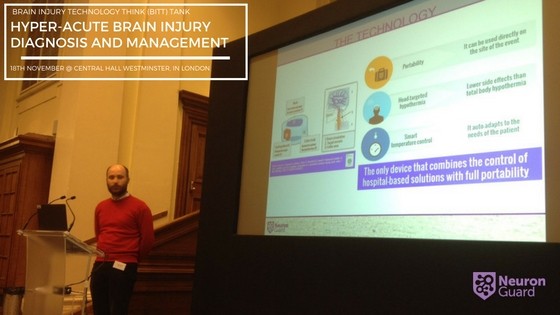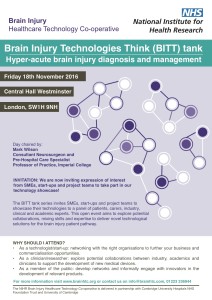Yesterday, Friday 18th November 2016, our CEO Enrico Giuliani was at the Library, Central Hall Westminster, in London to partecipate in the second focused Brain Injury Technology Think (BITT) tank on “Hyper-acute brain injury diagnosis and management“.
The event, organized by the NIHR Brain Injury Healthcare Technology Co-operative (HTC), has been Chaired by Mark Wilson, Consultant Neurosurgeon, Pre-Hospital Care Specialist and Professor of Practice (Imperial College).
The BITT tank series invites SMEs, start-ups and project teams to showcase their technologies to a panel of patients, carers, industry, clinical and academic experts. The event was a precious opportunity for medtech innovators like us to showcase novel solutions and explore potential collaborations with expert clinicians, industry partners and academics, mixing skills and expertise to deliver novel technological solutions for the brain injury patient pathway.
The event was divided in to three distinct sessions:
- Session 1: Unmet Needs Identification – Sharing the evidence-base from both a clinical and industry perspective.
- Session 2: Technology Showcase – Slots for SMEs, start up and project teams to showcase relevant technologies in the field and for interactive Q&A with the expert audience.
- Session 3: Panel Discussion – Horizon scanning with relevant funding bodies and research councils.
We had the big pleasure to present our brand-new target temperature and lifesaving medical solutions to the audience looking for collaborations to get solutions to patients sooner.
At the end of the event, Enrico Giuliani concluded with this feedback: “BITT stands at the intersection between innovative enterprises and institutions. It creates synergies to promote the development and adoption of new technologies in the medical sector. The feedback from patients and professionals, if included in the process, can steer the innovation towards more effective outcomes.”



Comments are closed.